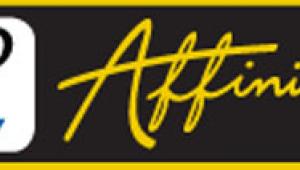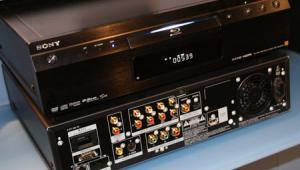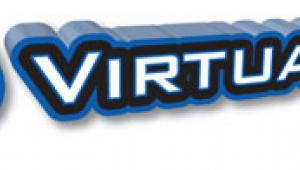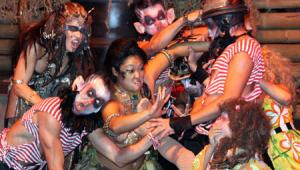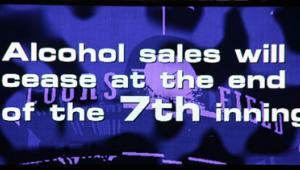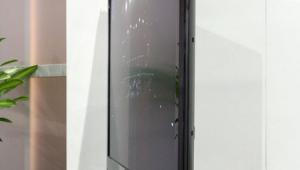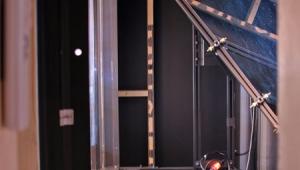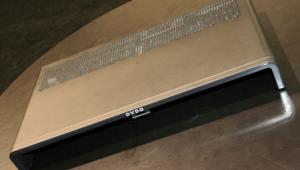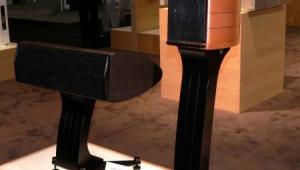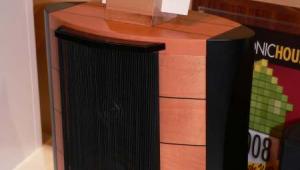That's a Wrap!

Fred's wrap-upand, indeed, each of his blogsis a gem of great writing, but he didn't explain the photo he posted with it. That scary-looking girl is one of the characters from the performance presented in SpeakerCraft's booth throughout the showshe was one of the zombie tap dancers captured by the evil flying monkey men.
Since Fred saw fit to post that pic, I thought it only fair to post a photo I took of two other characters from the showthe voodoo king and queen who got the whole story started. As I mentioned in my blog about it, the performance by Lucent Dossier was sort of like Cirque du Soleil, but much darker and sexier. I loved it!
Ahem, where was I? Oh yeah, CEDIA. There were some definite trends on the video side of things. Perhaps the most obvious was 2.35:1 super-widescreen projectionit seemed like virtually all projector companies are now offering this option. Most used an anamorphic lens affixed to the front of the projector, which stretches the image horizontally, along with electronic processing to stretch the image vertically. But a few, such as Panasonic's PT-AE3000, did it by zooming the primary lens so a 2.35 letterboxed image filled a 2.35 screen. This does not use the entire resolution of the imager, but it avoids any possibility of processing artifacts.
Another strong trend was the use of LEDs as a light source. This was most evident in LCD flat panels from Sony, Sharp, Samsung, and others, in which the LEDs behind the LCD panel can be independently dimmed in different areas of the image to enhance contrast and deepen blacks. Dolby has gotten into this game as well with its HDR (High Dynamic Range) system, which it licenses to manufacturers such as SIM2.
Also of great interest was the appearance of DLP front projectors that use LEDs as their light source. I saw two in actionone from Taiwanese manufacturer Chi Lin Technology and the other from Digital Projection. Both were in the early-prototype stage, and they were spec'd to output a mere 500 or 600 lumens, but the colors were spectacular, and there's no need to replace an expensive lamp every year or two. Look for such projectors some time next year.
Displays capable of 3D images (as long as you're wearing suitable glasses) made a strong showing as well. In addition to rear-pros from Mitsubishi and Samsung, several front projectors were breaking out of flatland, and Texas Instruments touted this capability at an after-hours bash where they presented Journey to the Center of the Earth in 3D. Perhaps the most important product announcement in this regard was Da-Lite's 3D Virtual Grey projection screen designed specifically for 3D, which I blogged about earlier in this report.
One clear trend was the increasing quality of inexpensive projectors, such as those from Epson, Mitsubishi, Panasonic, and Sony. In addition, some high-end manufacturers such as SIM2 and projectiondesign introduced new models that are well below the cost of their other offerings, though still a lot more than the least-expensive models on the floor.
Among the demos I saw, the best images were produced by the JVC DLA-SH4KNLG projector (4096x2400) displaying native 4K contentits clarity and detail were jaw-dropping. Designed mostly for the professional market (flight simulators, medical imaging, that sort of thing), it can also be installed in a home theater for only $80,000, which is a bargain compared with the new Meridian projector based on the same chassis, which will set you back $185,000. Meridian's demo was limited to upconverting 1080p to 4K, which didn't show off the projector's full capabilities.
Back in the land of more reasonable prices, the best demo of a 1080p projector was a split decision. I was particularly impressed with the Samsung SP-A800B ($10,000) being demonstrated by Joe Kane on the new Da-Lite Affinity screen, which brought out more detail and contrast than even Joe thought the projector could do. Also impressive was projectiondesign's dual-lamp Optix ($26,000) and Sony's VPL-VW70 ($8000). At the less-expensive end of things, I loved the look of the Epson PowerLite Pro Cinema 7500 UB ($5000), SIM2 D60 ($5000), Mitsubishi HC7000 ($4000), and Sony VPL-HW10 ($3500).
In terms of LCD flat panels, the LED-backlit models from Sony, Sharp, and Samsung looked amazing, with inky blacks and stunning colors, even on the brightly lit show floor. The Sony and Sharp models use red, green, and blue LEDs, while the Samsung uses white, but all offer local dimming, which results in a fantastic contrast ratio. Yes, it really works.
So there you have itanother CEDIA enters the history books. Most exhibitors I spoke with were certain that attendance was down due to the recession, and CEDIA's final figures confirmed it25,000 attendees this year compared with 29,000 in 2007, a decrease of 14%. Still, the show was a big success for anyone interested in home theater, with lots of new products that are sure to keep us busy until next year's Expo.
BTW, I echo Fred's invitation to let us know how we did with our show coverage. What did we do right? What could be improved? Your feedback will help us deliver the information you want even better in the future, so don't be shy. You can post a comment here or e-mail me at scott.wilkinson@sourceinterlink.com.


